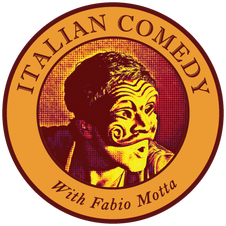Italian Comedy, also known as ‘Commedia Dell’Arte’, is a humorous theatrical performance that originated and traveled all over Italy throughout the 16th century. The roots of Commedia dell’Arte have influenced most of the world’s theatrical forms, from Shakespeare to Chekhov, as well as the characters and scenarios found in film and television today.
It is a theatre that has actors at its centre and the audience as its target. Through the use of mask, songs and lazzi (physical gags), the commedia troupes were able to break down all barriers in order to impact audiences from all different countries. It is a universal performance style, that speaks to all social classes.
We will be exploring the stock characters, the development of lazzi and comic routines, as well as building ensemble for the creation of a short commedia sketch at the end of the workshop.
This workshop provides an essential development tool for actors:
• The use of mask in performance
• Learning about the stock characters
• Improvisation and play
• Developing complicite' with an ensemble
• How to better connect with and impact an audience by breaking the 4th wall
• A deeper understanding of actions, rhythm, comic timing, physicality and storytelling
• Developing a deeper vocal and physical connection in your work
• The ability to create a Canovaccio (story outline) and perform it before an audience as an ensemble in a short period of time
Next Workshop TBC.
It is a theatre that has actors at its centre and the audience as its target. Through the use of mask, songs and lazzi (physical gags), the commedia troupes were able to break down all barriers in order to impact audiences from all different countries. It is a universal performance style, that speaks to all social classes.
We will be exploring the stock characters, the development of lazzi and comic routines, as well as building ensemble for the creation of a short commedia sketch at the end of the workshop.
This workshop provides an essential development tool for actors:
• The use of mask in performance
• Learning about the stock characters
• Improvisation and play
• Developing complicite' with an ensemble
• How to better connect with and impact an audience by breaking the 4th wall
• A deeper understanding of actions, rhythm, comic timing, physicality and storytelling
• Developing a deeper vocal and physical connection in your work
• The ability to create a Canovaccio (story outline) and perform it before an audience as an ensemble in a short period of time
Next Workshop TBC.

